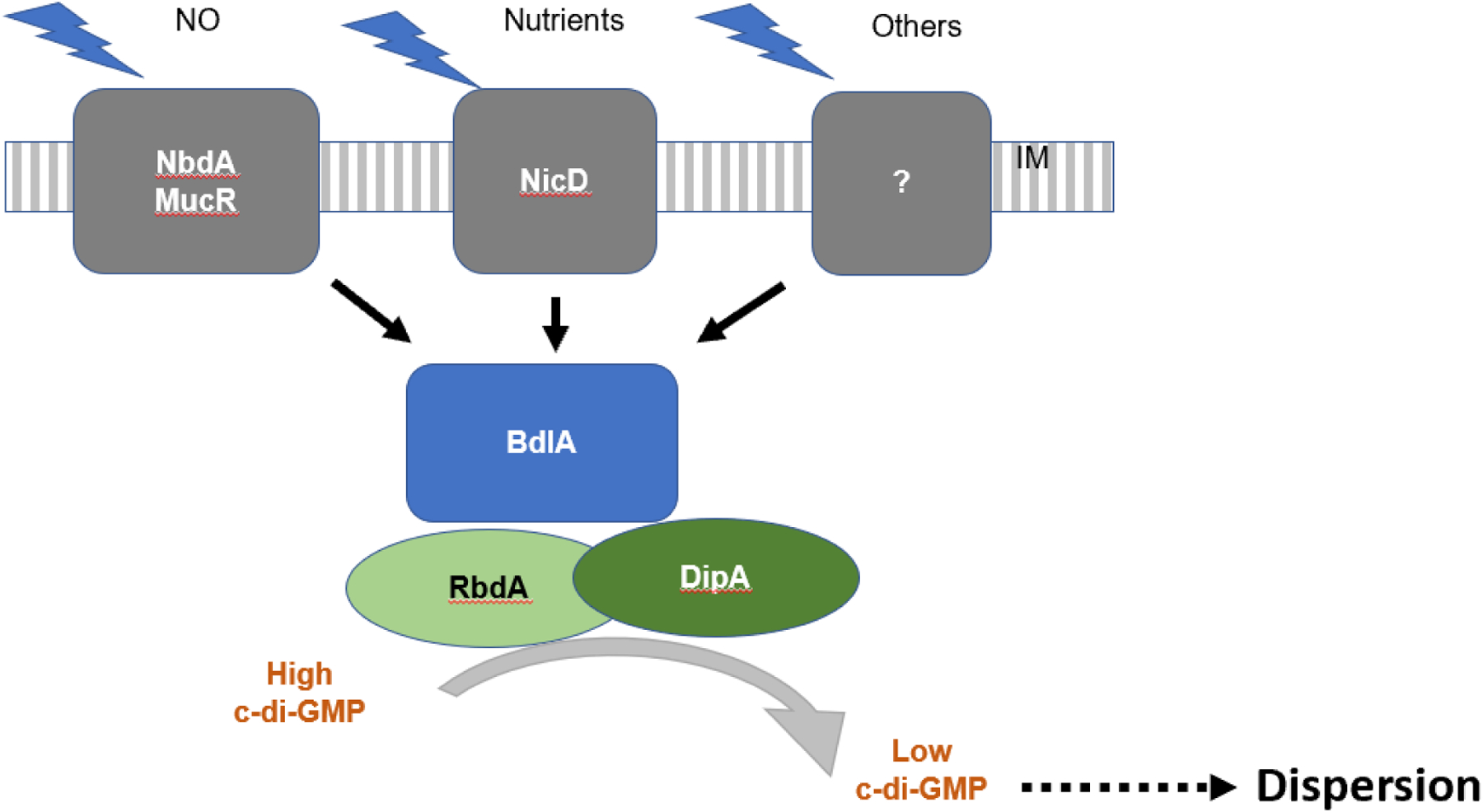Figure 3: Sensing of dispersion cues.

Model of dispersion cue sensing and modulation of bis-(3’-5’)-cyclic dimeric guanosine monophosphate (c-di-GMP) levels to induce dispersion. In Pseudomonas aeruginosa, dispersion cue sensing involves the chemotaxis-like MCP homolog, BdlA, the c-di-GMP phosphodiesterases (PDEs) DipA, RbdA, MucR and NbdA, and the diguanylate cyclases (DGCs) GcbA and NicD. The membrane-associated PDEs MucR and NbdA and the DGC NicD are involved in perceiving and relaying dispersion cues to promote the modulation of c-di-GMP levels. The DGC NicD and the PDE NbdA contribute to dispersion in a cue-specific manner, with NbdA sensing NO and NicD sensing nutrient cues. Receptors for other dispersion cues such as fatty acids have not yet been elucidated (indicated by the question mark). BdlA and the PDEs DipA and RbdA are central to the dispersion response regardless of the cue that is being sensed and contribute to the overall reduction of c-di-GMP levels post dispersion cue sensing.
